Latest Posts
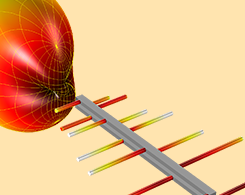
Designing Accurate EMC/EMI Testing Equipment with RF Modeling
EMI/EMC testing is used to ensure that various products, processes, and systems meet standard compliance requirements. RF modeling can be used to design equipment for accurate analyses.
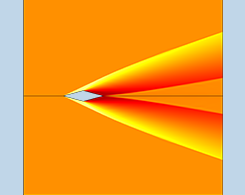
How to Model Supersonic Flows in COMSOL Multiphysics®
Learn about the different types of sonic flow and how to calculate the angle and Mach number of a shock wave in order to model the supersonic flow around an object, such as a diamond airfoil.
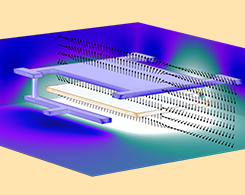
How to Create Electrostatics Models with Wires, Surfaces, and Solids
Here’s a guide to building models that combine wires, surfaces, and solids using the electrostatics features based on the boundary element method that are available with the AC/DC Module.
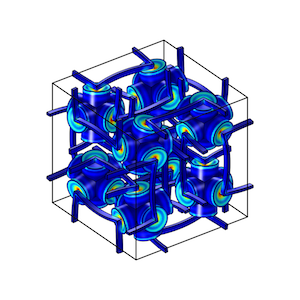
Analyzing a Unique Poroelastic Metamaterial with Simulation
This blog post combines the subjects of 3D printing and metamaterials, featuring a group that used simulation-based research to analyze a unique poroelastic metamaterial.
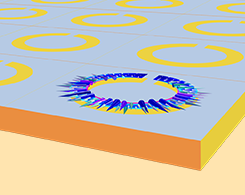
Streamlining the Design of Frequency-Selective Surfaces
If you want to improve the frequency response of a frequency-selective surface, you have many options for methods. 1 method streamlines what can be a complex process: simulation applications.
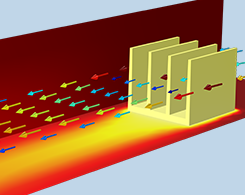
Comparing 2 Approaches for Modeling Electronic Chip Cooling
We go over 2 modeling approaches for electronic chip cooling problems. 1 way models the solid parts and a Convective Cooling boundary condition, while the other option includes an air domain.
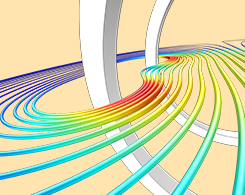
Simulating Helmholtz Coils in COMSOL Multiphysics®
Electromagnetics simulation simplifies the process of constructing a Helmholtz coil and calculating its magnetic field to ensure the fields are uniform, which is important for a variety of uses.
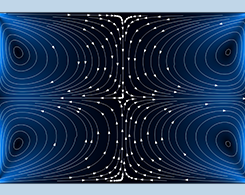
Efficiently Analyze Acoustic Streaming with Multiphysics Modeling
Acoustic streaming is when sound waves are used to generate steady fluid motion. You can use multiphysics modeling for an efficiency way to analyze this phenomenon.
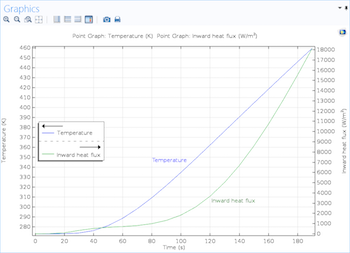
How to Create Graphs with Two Y-Axes in COMSOL Multiphysics®
Did you know that you can add a second y-axis to a 1D plot to include two scales of values in your simulation results? This blog post details how and also includes a video demonstration.
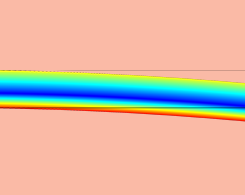
How to Model Generalized Plane Strain with COMSOL Multiphysics®
Learn how to use the generalized plane strain formulation in COMSOL Multiphysics® in order to model elongated structures that are free to extend in the out-of-plane direction.
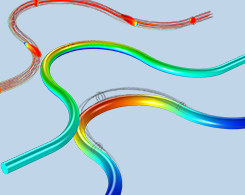
Modeling Aeroacoustics with the Linearized Navier-Stokes Equations
Get a comprehensive introduction to aeroacoustics modeling, as well as the linearized Navier–Stokes equations and how to implement them in COMSOL Multiphysics®.
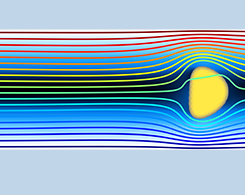
Investigating the Behavior of an Ancient Organism with CFD Simulation
Researchers used CFD simulation to study the behavior of an ancient organism called the Parvancorina in order to learn more about the ecosystem of the Ediacaran period, 635–541 million years ago.

New FEM Book Offers Modeling Guidance for Biomedical Applications
Guest blogger Guigen Zhang of Clemson University discusses his new bioengineering textbook, which focuses on computational modeling for biomedical applications.
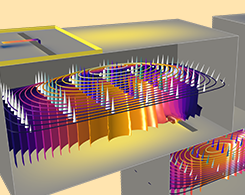
Introduction to Designing Microwave Circuits Using EM Simulation
When it comes to designing RF, microwave, and millimeter-wave circuits with electromagnetics simulation, the key is to start simple and gradually add complexity to your analyses.

Celebrating the Life of Robert Hooke
Robert Hooke was a Renaissance-era scientist who developed a law of elasticity (now called Hooke’s law) and published a well-known textbook on microscopy.
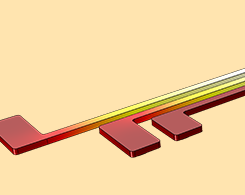
Optimizing the Design of Thermal Actuators for Use in Microsatellites
Microsatellites are replacing traditional large satellites in aerospace missions for gathering scientific data. Using simulation, we can optimize an important component of these devices.
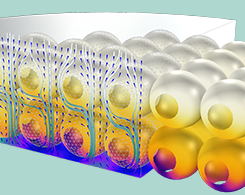
Introduction to Modeling Surface Reactions in COMSOL Multiphysics®
Bioengineers and electrochemists will appreciate this detailed introduction to modeling surface reactions with the COMSOL® software.
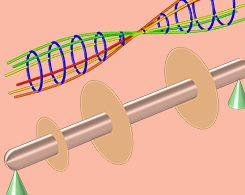
How to Perform Various Rotor Analyses in the COMSOL® Software
Check out all of the different types of rotor analyses you can perform using the specialized features in the Rotordynamics Module, an add-on to COMSOL Multiphysics®.
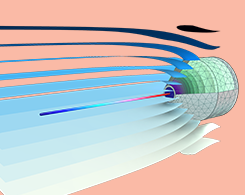
Analyzing a Probe Tube Microphone Design with Acoustics Simulation
Probe tube microphones are an important component in hearing aids. Learn about how you can use acoustics modeling to analyze the design and predict the performance of these devices.
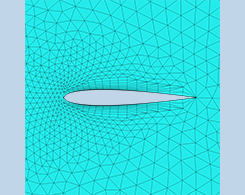
Which Turbulence Model Should I Choose for My CFD Application?
Modeling turbulence in the COMSOL® software? Find out which turbulence model you should use, depending on your CFD modeling scenario.
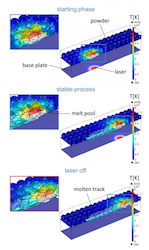
Analyzing Laser Beam-Matter Interaction in Selective Laser Melting
Selective laser melting is a common and important process in many types of manufacturing. You can model the interaction between the laser beam and matter for a closer look at this process.
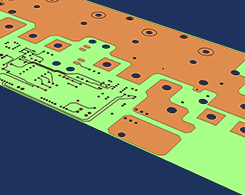
How to Import an ECAD Geometry for Printed Circuit Board Design
We demonstrate how to import an ECAD geometry into COMSOL Multiphysics® for the design of a printed circuit board. The example features an actual PCB geometry from a company in the industry.
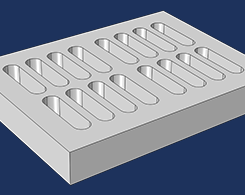
Creating a Model Geometry in COMSOL Multiphysics®
Learn how to create a geometry directly within COMSOL Multiphysics® using geometric primitives and geometry operations. Then, watch an introductory video series to see each step in detail.
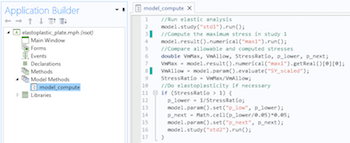
How to Automate Physics Choices and Studies Using Model Methods
The ability to create and use methods in COMSOL Multiphysics® is useful for automating your modeling processes, such as choosing physics and studies.
